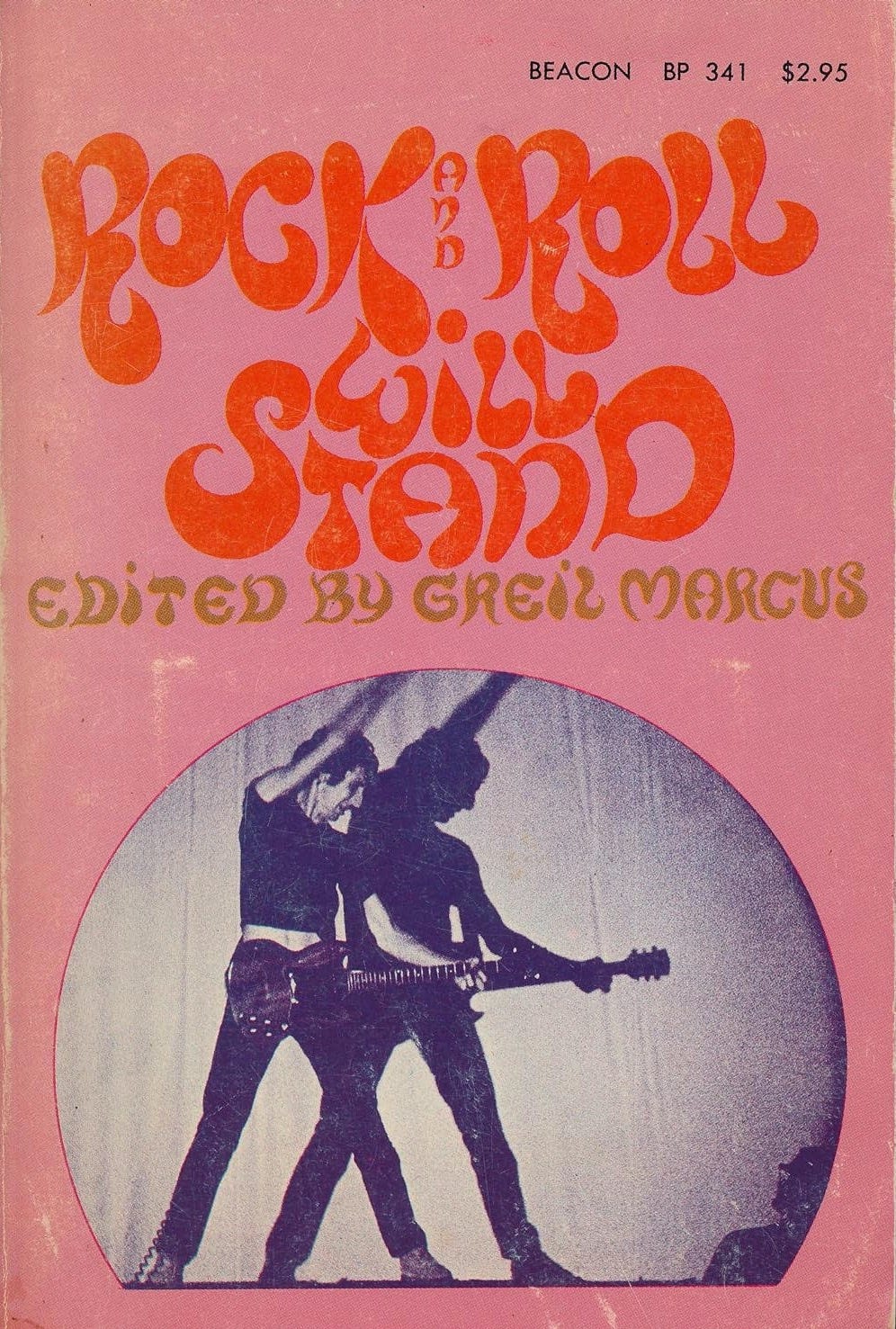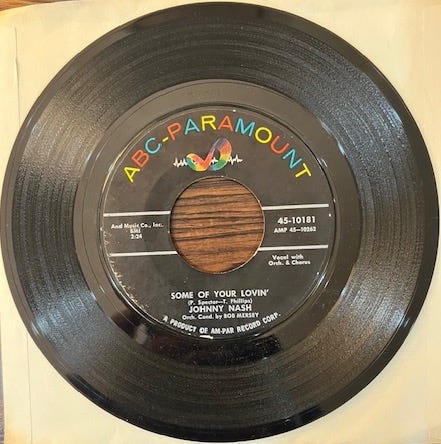The piece below was originally written for a Political Science class at Cal in 1967 as “New Horizons in Group Politics”—group politics then being a trendy topic in behavioral political science, as opposed to political theory, which is what my professors taught, though neither category encompassed rock groups, which was what I was writing about. It was updated for my first book, Rock and Roll Will Stand, a collection of pieces by Berkeley friends and musicians that came out from Beacon Press in 1969; most of the reviews focused on the price of the book, which they complained was too high.
I had a contract before I’d ever published a word anywhere about anything. Those were different times. The people who wrote for the book or whose published work—in the weekly underground San Francisco Express-Times, in the up-from-fanzine Mojo-Navigator, in Rolling Stone—I brought together, almost all knew each other. I had learned a lot from all of them, especially Sandy Darlington, the first real writer I ever met, who wore his knowledge, been-around-twice experience, and critical cocked hat as lightly as anyone could. Most of them are no longer around. Sandy, who after our book came out wrote the flinty memoir-novel Buzz River Letters and a book on Billy Martin’s Oakland A’s, died in 1989 in Mexico. Steve Strauss went on to found the Blue Bear School of Music in San Francisco, which goes on; he died in 2012. Marvin Garson, the editor and publisher of the Express-Times, where I took over Sandy’s music column from late 1968 through 1969, and who published his first and only book, Inside Dope, as Marvin Slobodkin in 1971, is listed in the log of deceased participants in the Berkeley Free Speech Movement of 1964, but there is no date. Stewart Kessler died not long after our book came out, in Spain, supposedly from a fall from a cliff, though the word was he was murdered in a dope deal. Mike Daly continued to write for Rolling Stone for a time. Langdon Winner is a professor of the Humanities at Rensselaer Polytechnic Institute in New York; he published Autonomous Technology in 1977, The Whale and the Reactor in 1986, and Technology and Democracy in 1992.
Two stories: I asked Jann Wenner if I could use a photo he’d taken at a Who show at the Fillmore in San Francisco, which had appeared as a Rolling Stone cover, for the cover of the book, which was ruined by would-be psychedelic lettering by the stone-cold square Boston publisher; it was only much later that I realized the silhouette of a person at the far right of the image gazing up at Pete Townshend was me.
At one point in the piece, I wrote about driving back from San Francisco to Menlo Park after a New Year’s Eve when I was in high school, catching a song but not the name of the singer, but from that one time instantly memorizing all the words: “When I’m thirsty / Some sparkling wine / Will do real fine indeed / But right now baby it’s some of your lovin’ I need.” I’d sing it to myself. I never heard it on the radio again. But years later, someone who had the record read the book, and she sent it to me: Johnny Nash, 1961,“Some of Your Lovin’,” ABC-Paramount, written and produced by Phil Spector, one of the heroes of “Who Put the Bomp in the Bomp De-Bomp De-Bomp.” It never made the charts, but in the late 1960s Nash discovered reggae, covered the Wailers’ “Stir It Up,” and in 1971 hit number one with the shining “I Can See Clearly Now,” which I hope lives forever. Somewhere, “Some of Your Lovin’” definitely will.
It was at the Avalon Ballroom in San Francisco. Lead guitarist Barry Melton was introducing the next tune by Country Joe and the Fish: "This song is dedicated to all the teenyboppers... and (casting an eye at a huge chick dancing on the stage) to all the big boppers too... yes, we all remember the Big Bopper, and Ritchie Valens and Buddy Holly, who all went down that day over Missouri or something in their Lear Jet, who've gone away to Juke Box Heaven..."



